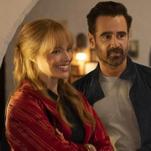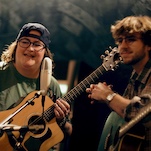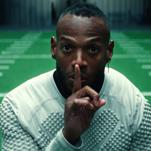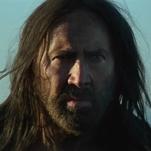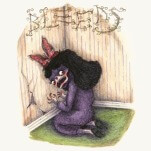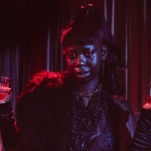10 Shows That Bounced Back After Weak Inaugural Seasons
In August, AMC’s tech drama Halt & Catch Fire officially tied the bow on its sophomore season. In covering the series for Paste, one of the unexpected pleasures has been observing how the show effectively course-corrected many of its biggest storytelling issues from Season One. In a market replete with TV programs of all shapes and sizes, it’s becoming increasingly rare for a struggling freshman show to get anything approaching a second chance once audiences tune out upon finding fault in either its premise or execution. As a result, a tragic amount of promising shows are never given the chance to reach their full potential.
In celebration of Halt’s impressive second-year turnaround, we take a look at some of TV’s best and most notable late bloomers. Whether it took a handful of episodes or entire seasons, these are the TV programs that had the ingenuity to locate and address their problematic areas, thus evolving into the shows their fans know and love.
“If you want to see a great pilot, watch the first episode of Cheers,” Tina Fey writes in her memoir Bossypants. “If you want to see an awkward, sweaty pilot episode, watch 30 Rock. I will not be joining you because I never want to watch that mess again.” Indeed, the 30 Rock pilot, as well as much of that initial season’s first half, finds Fey and Co. in a desperate scramble to find their footing and figure out what kind of show they want to make. With the notable exception of Alec Baldwin’s scene-stealing Jack Donaghy, however, most of the early storylines come across as a bit half-hearted, as if the writers were throwing various plots against the wall to see what would stick.
Fix: If the past decade has taught us nothing, it’s that Tina Fey is one of the sharpest comedic minds working today. Unfortunately, 30 Rock emerged at a turbulent time for the actress/writer (she had just given birth to her first child and was transitioning from her job at Saturday Night Live). Once Fey and her team found their bearings, however, it was only a matter of time before the show lived up to its promise, developing into one of the most tightly written, exhaustingly clever sitcoms of the 2000s. A big part of this involves an early creative decision to move the show away from being a semi-grounded take on the backstage machinations of a sketch program. Instead, the series embraced a more cartoonish sensibility that felt akin to a live-action version of The Muppet Show, complete with outrageous sight gags and nonstop meta digs at the program’s parent company. As Liz Lemon would no doubt say, “suck it, nerds!”
Blackadder
Today, Blackadder stands as one of the crowning achievements in British television—a rip-roaring period comedy combining smart, biting satire with the kind of absurdist farce that would have made the members of Monty Python green with envy. Over the course of four seasons, the show made a star out of both its leading man/co-creator Rowan Atkinson and head writer Richard Curtis (he of Notting Hill and Love Actually fame). So, how to explain that first year?
Now, to be clear, the program’s inaugural batch of episodes—which finds Atkinson’s bumbling Edmund unexpectedly thrust into a political power struggle after he inadvertently kills King Richard III—is not bad by any stretch, but it certainly pales in comparison to the show’s near-perfect other seasons. Much of this, unfortunately, can be tied to the creative team’s initial burst of ambition. Boasting a large cast and an even larger budget, a good portion of the scenes were shot on-location with the writers incorporating Shakespearean dialect into the script. Production proved to be a good deal of moving pieces and, frankly, you can see the resulting flop sweat. Many of the jokes fall flat and Atkinson’s Edmund character, whose subsequent incarnations became beloved for their pompous nature and ineffectual power grabs, just comes across as unlikable and genuinely unpleasant here.
The Fix: Sometimes less really is more. After some debate, the BBC authorized a second season but only after significantly slicing the budget. As a result, subsequent seasons found the cast and crew mostly confined to sets. This ultimately proved to be a great boon for the show as it allowed the actors and creative team to focus on crafting great comedy instead of being overwhelmed by shooting logistics. Moreover, Atkinson ceded his official writing duties to Ben Elton, whose background in the anarchic sitcom The Young Ones gave the series a needed burst of energy. The rest is history.
Perhaps appropriate given its titular teenage character, Buffy the Vampire Slayer experienced a period of major growing pains during its inaugural year. And while creator/showrunner Joss Whedon’s central conceit of literalizing universal high school experiences via dangerous monster was certainly a sound creative choice, the show had several major barriers to entry—namely, the baggage of its campy feature film forbearer, shoddy makeup effects, clumsy action and acting so wooden that our hero could probably impale a vamp’s heart with it (sorry, Season One David Boreanaz). And let’s not forget “I Robot…You Jane,” one of the most hilariously misguided takes on that early “Internet craze.”
-

-

-

-

-

-

-

-

-

-

-

-

-

-

-

-

-

-

-

-

-

-

-

-

-

-

-

-

-

-

-

-

-

-

-

-

-

-

-

-










